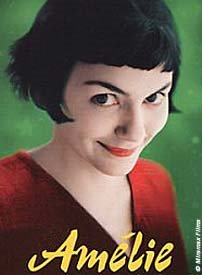A Systematic Comparison of Dream Theater's When Dream and Day Unite and When Dream and Day Reunite (or A Critique of the Mouldy Pathways of Knowledge)

A debut album to rival the very crew-cut of a Lundgren, or the euphoric blue of a Fahey, or the feeling of joy derived from repeating the same old references again and again. That’s what should be on those CD covers, or MP3 desktop icons, a bunch of blurbs, most likely from the smug jowls of Martin Amis: “Best listen since yesterday!” “A spellbinding trip through exhilarating awe!” “I’ve just messed myself!” Albums coming out with one large blurb covering the entire bulk of mass production; only from space can it be seen that Amis found it “banal and brilliant at the same time,” or that The Sun gave a “super-dooper” to Mekong Delta’s second album.
There’s a rumour of a Penguin Classic (perhaps The Fall) that is Amis-less. It has become the holy grail to many, and recently became the subject of obsession for a young man from
Good luck to that poor martyr (for he is that); his escalating adventures will surely soothe our mandibles one day in a Vintage Classics reissue.
Alas, as it currently stands, Amis hasn’t wandered into the musicological. I’m sure if he ever does he’ll waste no time perusing the Dream Theater back catalogue. “What albums are loitering around the back there?” he’ll enquire. He’ll arrive at the solid gold bench marking the monolithic presence of Images and Words, and will probably sit down for a while. As that last harmonic of ‘Learning To Live’ echoes around in his perineum, he’ll think, “yes, that was some nice prog-metal there, what I certainly don’t need to do right now is go back any further in the DT discography, to regress into that confronting mist would be something I will not be a part of; if there is anything there beyond it, and I’m sure there’s not, I know I want nothing to do with it.”
Such words have been uttered by others, Amis will break no hymen of uniqueness with that one. A Dream Theater fan sits in his Six Degrees of Inner Turbulence t-shirt, by a computer, posting on the John Petrucci message board, but wait! To his left sits his beloved collection of Dream Theater compact discs, arranged in chronological order, Octavarium melts into Train of Thought, all the way down to…what’s that? I see Images and Words, but now we’re melting into a bunch of Megadeth. How is that right? Where’s the logic there? Mustaine’s sneering saliva glands are concealing and suppressing a monumental piece of music, a fabulous assemblage of intricacies and energetic and youthful vigour.
What am I talking about? Amis’ ignorance will net him zero slack on that one, he’ll be participating in nothing past a good rueing when the day comes. Hark ya say? More like hack, and not a very good one. What I’m referring to here is Dream Theater’s debut masterpiece, When Dream and Day Unite. Amis won’t know of its 1989 release, or the fact that it has a crap cover featuring some guy with floppy hair being branded with the Majesty symbol, I would have preferred Catherine Keener to be honest, although she has hairier armpits.
For the benefit of clarity and concision, I must pinpoint the fact that this album was rerecorded live in 2004, this time cunningly titled When Dream and Day Reunite. The purpose: to mark the fifteen year anniversary with the current line-up, much the same only with Labrie vocalising, and keyboard beast Jordan Ruddess playing all
Lest you begin to mistrust my title, let me get all rhetorical for a moment…ahem…yes…so, how do these two versions of primarily the same bulk of music compare?
A good question, brimming with pertinence. First thing, the production on the latter is significantly superior, even though it was recorded live. The original suffers from a weak production job, time constraints and inexperience make things sound rather insubstantial at times, only made all the more apparent when one listens to Petrucci’s Reunite Mesa Roadking-powered guitar sound and then hears the tiny riffing on the original. Where’s the chunk in that E, huh? I can still control my bowels, they should really be quaking south of
The mixing is pretty perfect. My only reservation is that the keyboard in the opening bars of the first distorted riff in The Killing Hand is way too low, I wanted to hear those lovely orchestrated strings, let them resonate for a while, release the strings Pilate! The only other flaw, and this one is wrapped in ambiguity, is that in the second verse of The Ones Who Help To Set The Sun I would presume that Ruddess plays that wonderful clean guitar part that lathers the proceedings in the original, why would he not? Again, he needs to be higher in the mix right there. There are probably many more times that Ruddess should have more presence, but alas I’m mainly content being blasted with Petrucci’s Ernie Ball.
It’s always great when a band supplements their material when regurgitated in the live environment. You get jisming additions such as the added clothing to the riffing of Metallica’s Fade To Black. Reunite contains a few of these. An enticingly technical flurry of instrumentation is appended to the end of Light Fuse and Get Away, which ends in a rapture of feedback, in turn, segueing into the subsequent song. Of course, the most prominent enhancement is unreleased track Another Hand inserted into the centre of The Killing Hand, turning an already awesome song into the luminous, auditory fluid of the gods. For that melodic breakdown and ensuing solo, it becomes elevated into the pinnacle encasement, a large cubic mechanism residing atop the highest peaks; that which houses the eyes of Audrey Tautou, wordplay of Vladimir Nabokov, and inquisitive look of Larry David.
So the rerecording is better than the original? The playing is the exemplar of professionalism, no qualms there, the guys are virtuosic machines at their tools. However, as ever, heads arise. They are the bulbous heads of contention, peering out from their shadows somewhere beneath complacency and consensus. Those eyes tell of stories too forlorn and demoralized to even cite in passing.
Now I have nothing against Labrie, his studio work is very acceptable, but his live performances are often blemished by what seems like a sudden constriction of range. Any singing where a tongue comes out of it’s residence and that’s the sign that lines have been traversed. Lines marking the territory between listenable and squawking. Although Reunite marks a reasonable and adequate Labrie, there are many arguments to be propounded about how one might nudge a preference towards old Charlie Dominici. It’s a claim I’d invite into my home anytime. Personally I’m unsure, but I’d be tempted to go and buy a hat so I could throw it into Dominici’s lap. Whether I’d ask for it back, well, again, contention raises it’s head.
Whatever the hat throwing being commenced, the vocals do present the few areas that the original shows itself as superior, however this is often down to a lack of harmony vocals on the live one (and no, Petrucci and Portnoy’s lowly mixed backings bring nothing to this particular Dream Theater live escapade). In the post-2nd chorus of A Fortune In Lies the original reigns supreme, it is liable to lash five lengths of whip frenzy around your aurals, whereas the latter version sadly elapses anonymously.
What was at one time the peak of When Dream and Day Unite, that is, the word-heavy mid-section of Its Only a Matter of Time, up until the aforementioned mighty amalgam of Another Hand and The Killing Hand, is utmost on the original. Its rendition maintains a sting of suffocating lines of lyrics, reiterated in asphyxiating precision. Reunite lacks the bite of the initial recording on that one.
Instrumental The Ytse Jam is only given added oomph and intensity in Reunite. (Oops, sorry, forgot to mention, the contention creatures absconded elsewhere, their job was done anyway.) A pounding barrage of drums propels the mystical palpitations in only the forward direction. And let me take this opportune second to assert that the later half of the song is superlative to the early sections, great as they are.
That vivacity and power turn sixth track Afterlife from a song sometimes weighed down with too many verses, into a mass of reverberations, forceful, but yet melodious. And not once, take note Amis, not once is there thoughts of “when’s the damn instrumental break coming?”
Were I to accost a youthful Dream Theater fan, likely to reek of second hand Queensryche albums, about his lack of ownership of that debut album I’ve been alluding to, I would say that Reunite is overall the better of the two versions. I’d also warn him that the original too is fantastic, crammed with joy it is, and that we’re all enclosed in a virulent subjectivity that no one’s escaping from anytime soon.
In the end I’d say a purchase is necessary, from not just him, but all those who overlook this album, especially if you can get the special promo version that includes the DVD of the performance (a DVD available separately anyway), like that of which I own. C’mon, I had to brag, you think Amis wouldn’t list his “50 books I bought and didn’t read last week” given ample opportunity? I doubt it.



